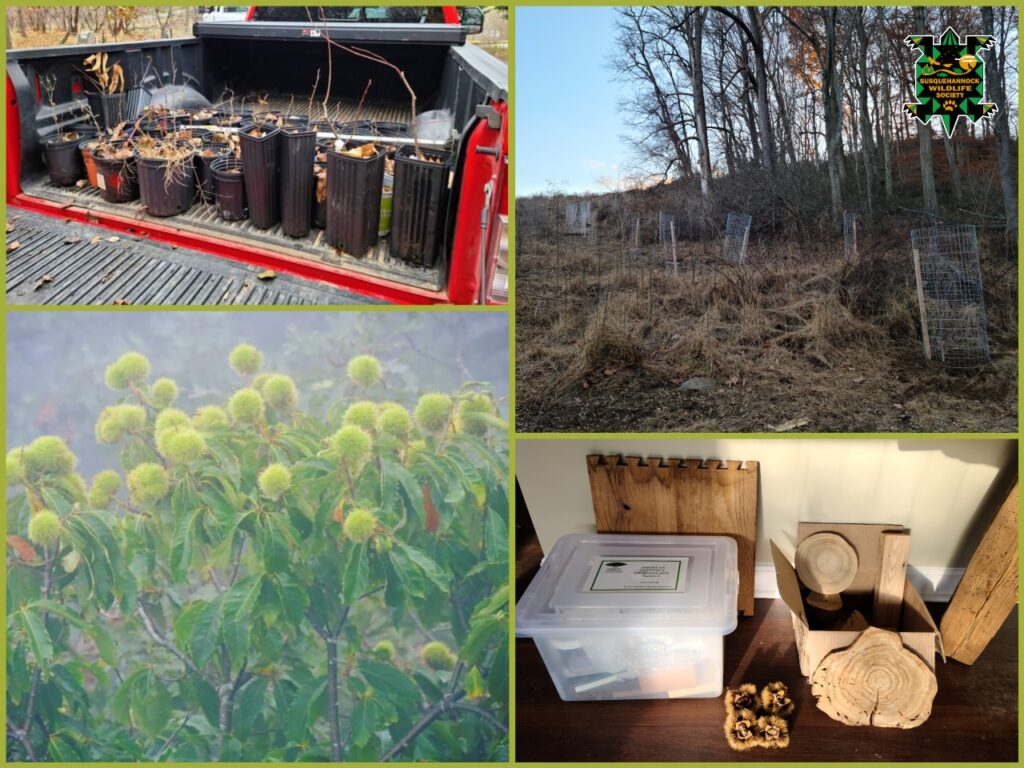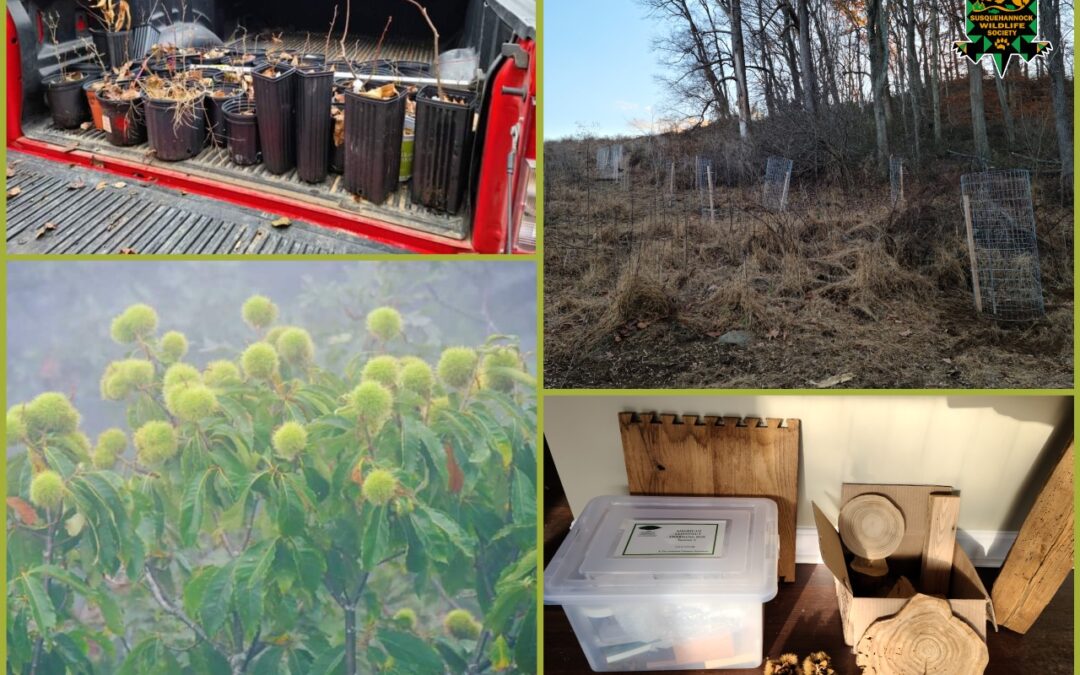After having to cut most of our Green Ash Trees due to damage from the invasive Emerald Ash Borer, we are proud to announce we have at the same time begun a new restoration project at the Wildlife Center. Thanks to a generous donation of forty head-started seedlings, we now have American Chestnut trees back in our soil here in what is likely the first time in a century.These are the fabled “redwood of the East” that comprised 25% or more of many of our forests until a fungus, the Chestnut blight, arrived from Asia and all but wiped out some 4 billion trees. On occasion they can still be found naturally growing, appearing as almost ghost-like remnants of our long lost original forests. Now however, most remaining trees are small, rarely fruit and once they exhibit enough bark splitting blight cankers, they only survive by sprouting from their roots with little success at significant growth.
This mighty tree was part of our not too long past modern American culture (Chestnuts roasting on an open fire ![]() ), sustained rural communities and of course Native Americans for millennia before while providing both food and shelter for many species of wildlife including the huge flocks of now extinct Passenger Pigeons. These often 100+ft trees that could be as large as 10ft in diameter, also built our Nation, with its light yet strong, rot resistant wood being used for railroads, telephone poles, and many of our early buildings.
), sustained rural communities and of course Native Americans for millennia before while providing both food and shelter for many species of wildlife including the huge flocks of now extinct Passenger Pigeons. These often 100+ft trees that could be as large as 10ft in diameter, also built our Nation, with its light yet strong, rot resistant wood being used for railroads, telephone poles, and many of our early buildings.
For years, scientists have been studying the blight resistance found in Chinese Chestnut trees and have attempted creating varying levels of hybridization, growing new trees from the remaining more genetically resilient trees and most recently genetically modifying trees with genes and then breeding them back with other trees as the best hope to resist the blight more effectively. With our trees we have mostly pure American Chestnuts and a handful of hybrids but we hope to eventually receive some of the new transgenic type down the road. Unfortunately with tree research it is a multiple generation effort to grow trees large enough to observe and experiment with which types may have the best chance of survival.
Our trees will almost certainly be affected by blight but there have been some successful methods developed to treat or at least minimize the damage to the trees and keep them growing. We have hope that thanks to the tireless dedication of organizations like the The American Chestnut Foundation, scientists will be able to find a more permanent method of resisting the harmful effects of the blight and soon start set forth on the important journey to truly bring this incredible species back to our forests in a substantial way. Until then, we will educate future generations about this amazing tree with an exhibit in our center, our new education kit and wood samples, while enjoying watching our tiny trees grow as we keep them alive the best we can so they can represent an early stage of what we hope will become a grand comeback for their kind.



